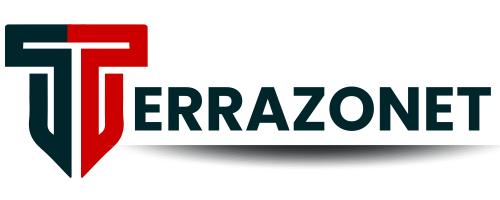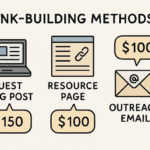We live in an era where convenience is paramount, and language is no exception. With tools like Google Translate and DeepL readily accessible, translating a foreign menu or a website snippet has become part of daily life.
Building on this convenience, these remarkable advancements in Artificial Intelligence have sparked a fervent debate: are we on the verge of an era where AI will render human translators obsolete?
Despite these conversations, the reality is far more nuanced and interesting. The future of translation isn’t a story of replacement, but one of a powerful symbiosis between the raw efficiency of AI and the profound expertise of human linguists.
The future of translation lies in how AI and human translators collaborate to enhance global communication in ways we are only beginning to appreciate.
The Unstoppable Rise of AI in Translation
The development from basic, literal machine translation to today’s advanced Neural Machine Translation (NMT) marks a significant transformation. Modern AI can analyse sentence structures, learn from large datasets, and generate translations that are fluent and often accurate.
The key advantages of AI Translation Services in Australia are undeniable:
- its blistering speed
- its cost-effectiveness
- its ability to process immense volumes of text.
For businesses needing to translate thousands of user reviews or internal documents, AI is a practical and effective solution. Yet, despite its technical strengths, AI has a notable limitation: it cannot fully understand cultural nuances, sarcasm, puns, or the emotional intent in a marketing slogan.
A machine might translate the words of a poem, but it will almost certainly miss the poetry. This is the boundary of algorithms—the point where understanding must transcend mere data processing. AI can replicate language, but it cannot yet replicate the human experience that gives language its meaning.
The Enduring Value of the Human Translator
This is where the unique and irreplaceable skills of the human translator shine. A professional linguist offers far more than bilingualism; they provide deep cultural understanding, contextual awareness, creativity, and the critical thinking needed to navigate the grey areas of language.
They act as cultural bridges, ensuring that a message is not only translated but also appropriate, resonant, and effective for its intended audience. In high-stakes fields such as law, medicine, and immigration, this level of precision is non-negotiable, as even a minor mistranslation can have significant consequences.
Accountability and proven expertise are paramount in these sectors. In Australia, for instance, the National Accreditation Authority for Translators and Interpreters (NAATI) acts as the industry’s gold standard, setting and maintaining rigorous professional benchmarks.
When submitting official documents for a visa application, legal proceedings, or university enrolment, Australian authorities often mandate translations from an accredited professional. This is where relying on a generic AI tool is not just risky but unacceptable.
Engaging professional NAATI translation services is essential. NAATI-certified linguists ensure your documents are translated accurately and will be accepted by government departments, offering assurance beyond what AI can deliver.
The Collaborative Future: A Hybrid Approach
Rather than seeing AI as a threat, the forward-thinking language industry sees it as a powerful tool. The emerging dominant model is not human versus machine, but a hybrid workflow often referred to as “machine-first, human-optimised.” This process, formally known as Machine Translation Post-Editing (MTPE), utilises AI to generate a high-quality initial draft, enabling rapid coverage of large texts. A human translator then steps in to review, refine, and perfect the output, ensuring that meaning, nuance, and context are preserved beyond what AI alone can achieve. This approach yields faster project turnaround times, increased accuracy in complex content, and cost efficiency for clients.
This collaboration elevates the translator’s role. It allows them to spend less time on repetitive translation tasks and instead devote their expertise to ensuring quality, creativity, and cultural appropriateness. As a result, hybrid workflows increase productivity while also guaranteeing higher-quality, culturally sensitive translations for clients.
They become editors and cultural consultants, adding polish, nuance, and creativity—a final layer only a human can achieve. This approach captures the speed of machines with the intellect of experts.
Read Also: Customer Service in 2025: Channels, Techniques, and Tools for Exceptional Support and Retention
The Evolving Landscape of Translation in Australia
The demand for sophisticated language solutions is particularly evident in a nation as vibrant and multicultural as Australia. With over one-fifth of its population speaking a language other than English at home, Australia is a melting pot of cultures, creating a constant and growing need for high-quality translations.
The Documents That Need to Be Translated by a Certified Translator Are:
- Medical Reports
- Driver’s Licence
- Bank Statements
- Birth Certificates
- Death Certificates
- Divorce Certificates
- Marriage Certificates
- Academic Transcripts
- Passport & Visa Documents and many more.
In summary, all personal documents required by the government for official purposes, such as immigration, educational, and legal purposes, must be translated by a certified translator in Australia.
For large corporations requiring the localisation of their websites, marketing campaigns, and legal contracts to connect with Australia’s diverse domestic market effectively, they can choose standard translations, which can be done quickly using MT. Interestingly, the industry is showing remarkable adaptability.
The best translation and localisation service providers in Australia are not resisting technology but are intelligently integrating it into their offerings.
- They provide a sophisticated range of solutions tailored to clients’ needs.
- They also offer cost-effective, AI-assisted translation for low-risk, high-volume internal content, while reserving premium, human-led transcreation for high-impact branding and advertising materials where cultural resonance is key.
- Savvy clients are learning to match the tool to the task. At the same time, a free online translator helps get the gist of a foreign email.
- A business serious about its reputation and success will invest in comprehensive services that go beyond literal words to navigate local customs and consumer sensitivities expertly.
Specific sectors across the country are heavily reliant on this nuanced approach. The healthcare system requires precise translations for patient care; the legal field demands meticulous accuracy in court documents and contracts; and the tourism and education sectors depend on culturally attuned communication to attract and serve international visitors and students. The hallmark of leading translation services in Australia is this intelligent blend of technology and human expertise. This combination, which relies on accredited professionals, is indispensable. This powerful combination ensures that communication is not just converted from one language to another, but is truly understood. It promotes clarity, builds trust, and ultimately drives connection and success in an increasingly globalised world, a mission supported by professional bodies like the Australian Institute of Interpreters and Translators (AUSIT), which champions the high standards of the profession.
Conclusion
The narrative that AI will replace human translators is an oversimplification. Artificial intelligence is a transformative and powerful tool, but it is not a substitute for the profound cultural and linguistic expertise of a professional linguist. The future is collaborative. This collaboration between AI’s processing power and human intelligence is already creating a translation landscape that is more efficient, more accessible, and more culturally sensitive than ever before. It is an exciting evolution, one where technology empowers human experts to do their best work: breaking down barriers, promoting understanding, and building a more deeply interconnected global community.
You May Also Like: AI Detector and CudekAI: How Advanced Technology Helps Identify AI-Generated Content



















